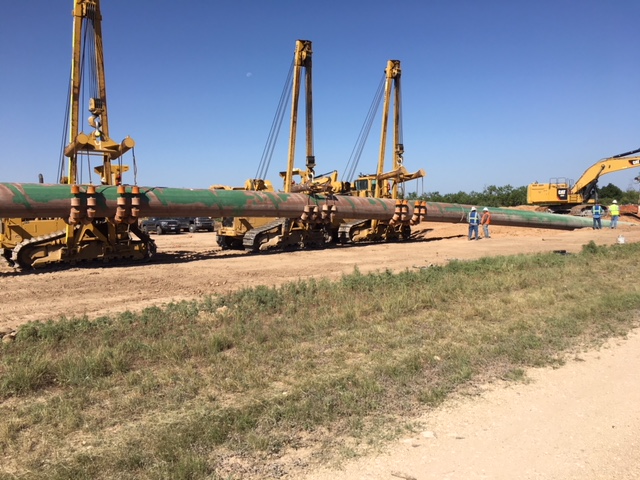Texas Railroad Commission Exceeds Legislative Target for Pipeline Safety Inspections
By the Texas Railroad Commission
AUSTIN — The Railroad Commission’s highest priority is protection of public safety and the environment, which is why the agency has robust inspection programs for the industries it regulates.

Among the areas the RRC has been excelling in is with pipeline safety special investigations. The agency had completed more than 1,800 such inspections by early August. The Legislature’s target measure for the agency is 1,200 accident and special investigations by the end of August.
This is the seventh year in a row the commission has exceeded the legislative goal.
The RRC enforces both state and federal regulations for more than 248,000 miles of intrastate pipelines, including natural gas and LP-gas distribution lines, hazardous liquid and natural gas transmission lines, and hazardous liquid and natural gas regulated gathering lines.
In addition to regular comprehensive inspections, special investigations involve program evaluations of nearly 1,600 operators in the state on behalf of the federal Pipeline Safety and Hazardous Materials Administration. This includes RRC pipeline inspectors looking at such things as operation and maintenance manuals, operator qualification manuals, integrity management plans, distribution plans, and more.
“These types of inspections require inspectors to have certain types of qualifications required by the federal government,” said Stephanie Weidman, RRC Director of Pipeline Safety. “Our inspector retention levels are higher than they ever have been which allows us to continue to qualify more inspectors and complete more inspections.”
RRC’s pipeline safety inspectors make it possible for the state to be a leader in pipelines, which are the most efficient means to safely transport large amounts of natural gas, oil, and other hazardous liquids. The Texas Pipeline Association estimates that a 20-inch pipeline running 50 miles can replace 1,650 tanker trucks carrying oil on the road. Pipelines also help reduce flaring by alleviating potential backing up of supply at the point of production.
In recent sessions, the Legislature has assisted RRC’s mission to ensure safety with additional funding for pipeline safety and inspectors.
As part of the agency’s computer system modernization, it launched the online Pipeline Inspection Permitting and Evaluation System (RRC PIPES) in July. RRC PIPES is a centralized portal in which RRC staff and operators upload documents, including inspection and incident reports, and make more documents available to the public online.
Related News
Related News

- Keystone Oil Pipeline Resumes Operations After Temporary Shutdown
- U.S. House Passes Bill to Reverse Biden's LNG Pause
- Biden Administration Buys Oil for Emergency Reserve Above Target Price
- Enbridge to Invest $500 Million in Pipeline Assets, Including Expansion of 850-Mile Gray Oak Pipeline
- Williams Delays Louisiana Pipeline Project Amid Dispute with Competitor Energy Transfer
- Evacuation Technologies to Reduce Methane Releases During Pigging
- U.S. Regulators Approve Mexico Pacific LNG's Saguaro Connector Pipeline
- Editor’s Notebook: Nord Stream’s $20 Billion Question
- Enbridge Receives Approval to Begin Service on Louisiana Venice Gas Pipeline Project
- Russian LNG Unfazed By U.S. Sanctions




Comments